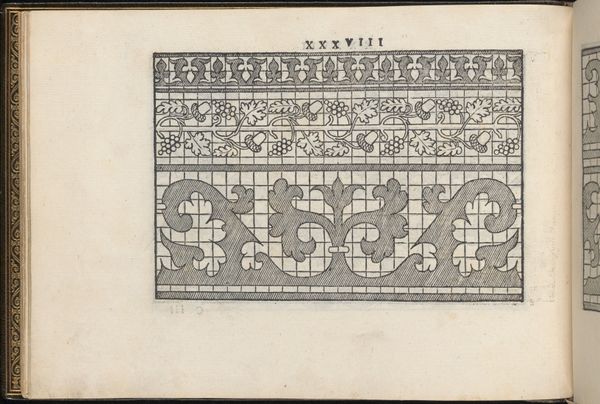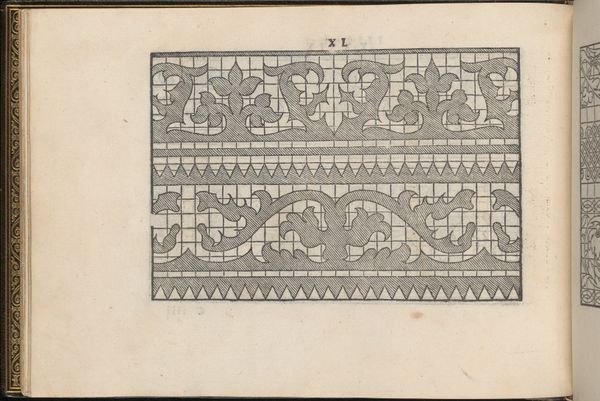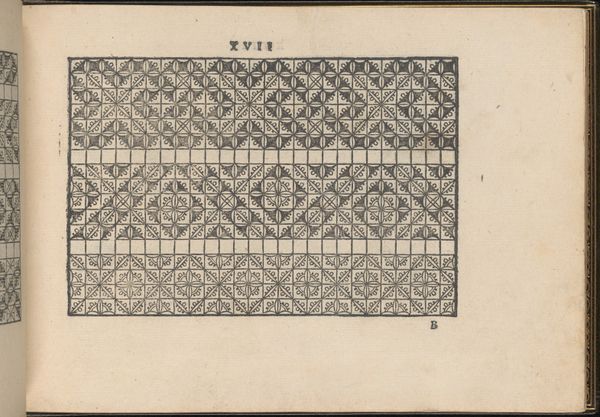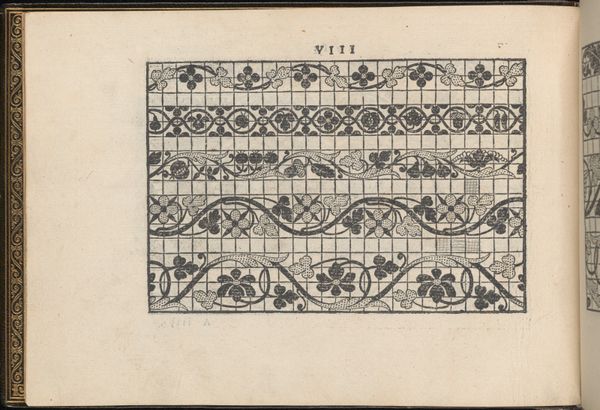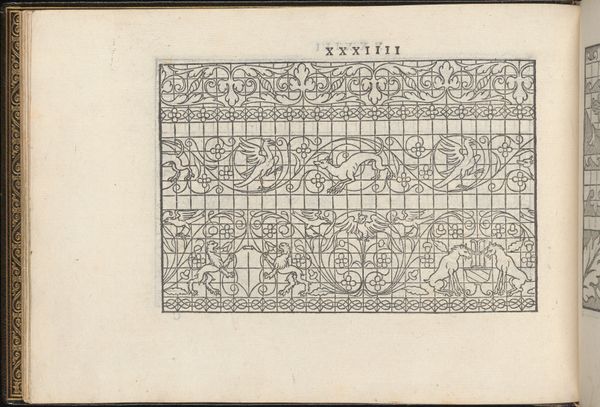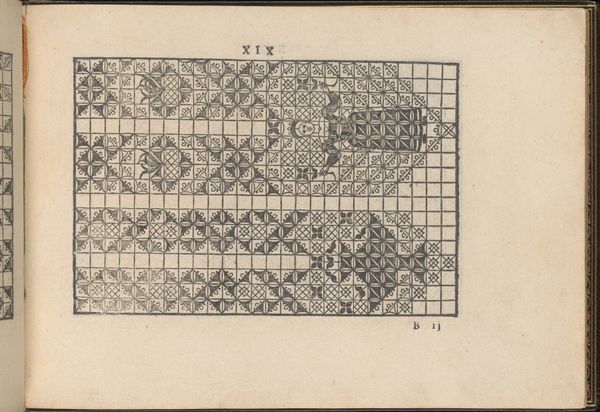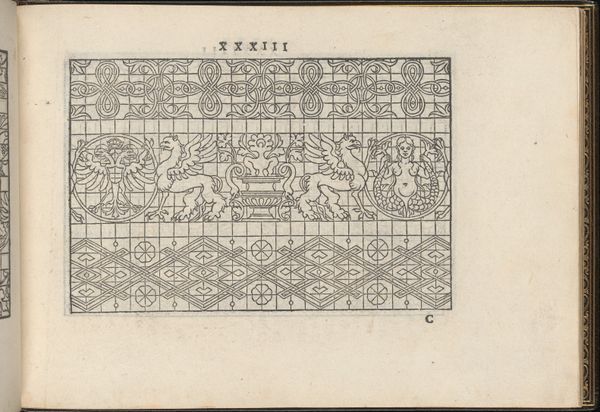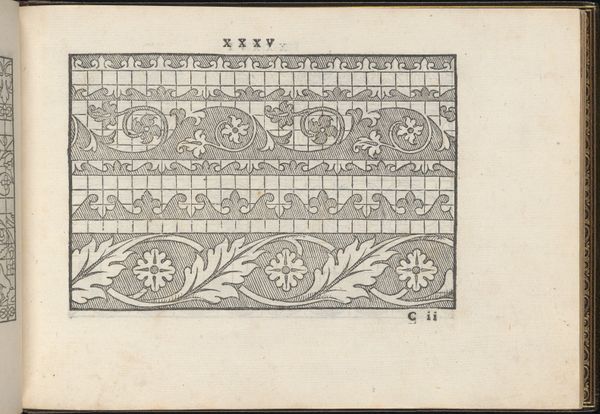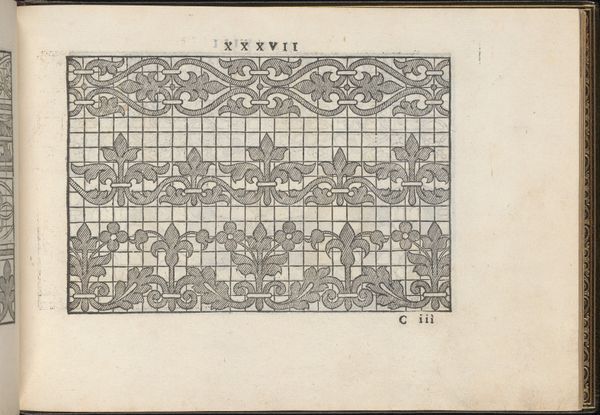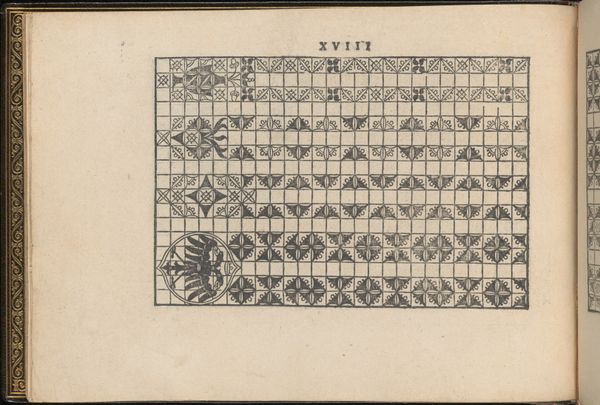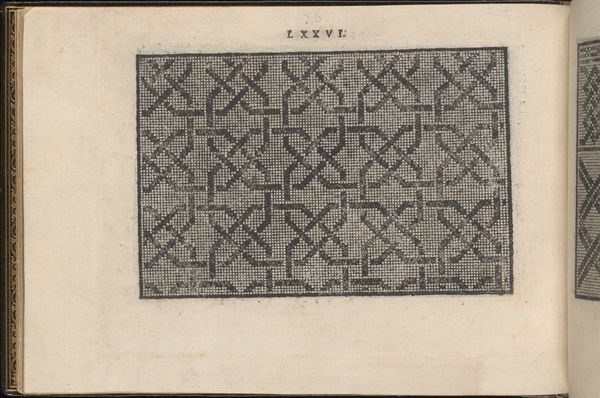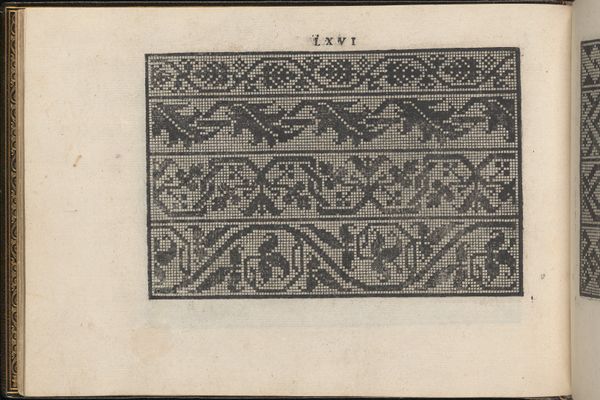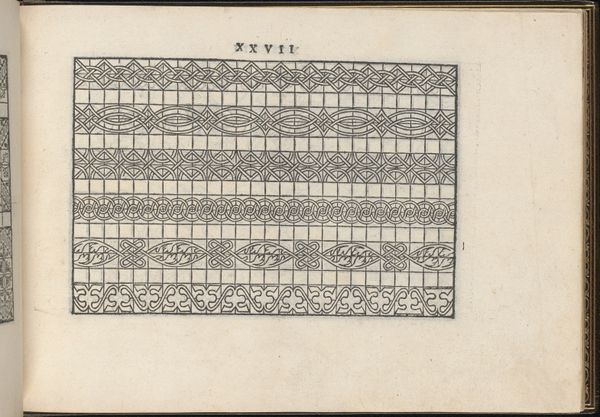
La Vera Perfettione del Disegno di varie sorti di recami, page 20 (recto) 1567
0:00
0:00
drawing, print, engraving
#
drawing
# print
#
11_renaissance
#
geometric
#
line
#
decorative-art
#
italian-renaissance
#
engraving
Dimensions: Overall: 6 5/16 x 8 7/16 in. (16 x 21.5 cm)
Copyright: Public Domain
Curator: This page comes from Giovanni Ostaus’s “La Vera Perfettione del Disegno di varie sorti di recami,” specifically page 20 recto, published in 1567. It's an engraving, part of a series intended as patterns for embroidery and lace making. Editor: Intricate! At first glance, I’m seeing a beautifully contained geometry. The lines are so clean, but they lead to these organic, almost flowing forms... restrained nature, perhaps? Curator: I think that’s spot on. Renaissance embroidery was not just decorative; it was deeply symbolic. Patterns like these, based on geometric structures, referenced classical ideals of order and harmony that defined the era’s worldview. The grid suggests rationality, while the interwoven floral designs add an element of earthly delight. Editor: Exactly! And I immediately wonder about the role of women during this time period, as well. I understand this sort of art form offered one potential route to agency through creativity and labor, in times and locations where their influence might be constrained. The Italian Renaissance, yes, was largely patriarchal. Curator: Indeed. Consider too, the reproductive aspect of this print: its function was to disseminate patterns to enable other makers to create and further interpret them. So, although the original designs came from Ostaus, its execution lies with countless unnamed women artisans across Europe who took up the needle and thread. Editor: Fascinating. It makes me think about the intersections of craft, gendered labor, and the accessibility—or inaccessibility—of art production during this period. To me, this page reflects both the beauty of a structured society and its undercurrents of creativity seeking an outlet, finding it in the intricate details of daily life. I see something defiant in all this... a silent conversation about aesthetics, skill, and purpose that reaches across centuries. Curator: I agree wholeheartedly! It’s a powerful reminder that sometimes, the most resonant art comes from unexpected places, speaking to us in a visual language as fresh today as it was back in the sixteenth century.
Comments
No comments
Be the first to comment and join the conversation on the ultimate creative platform.
